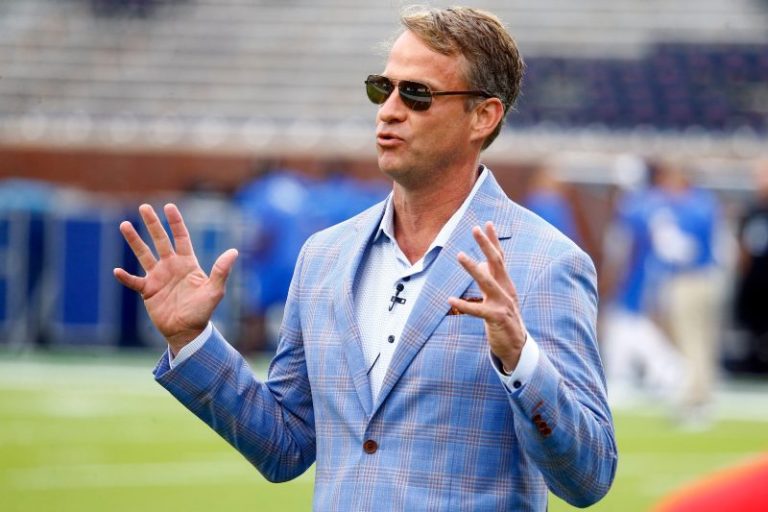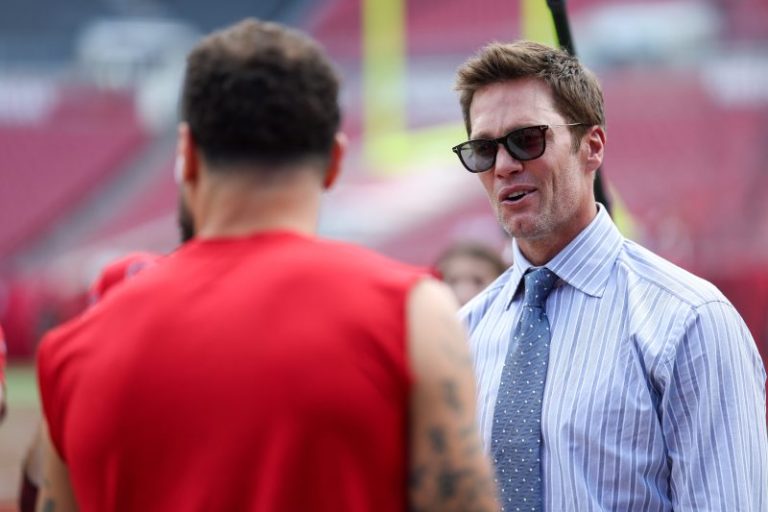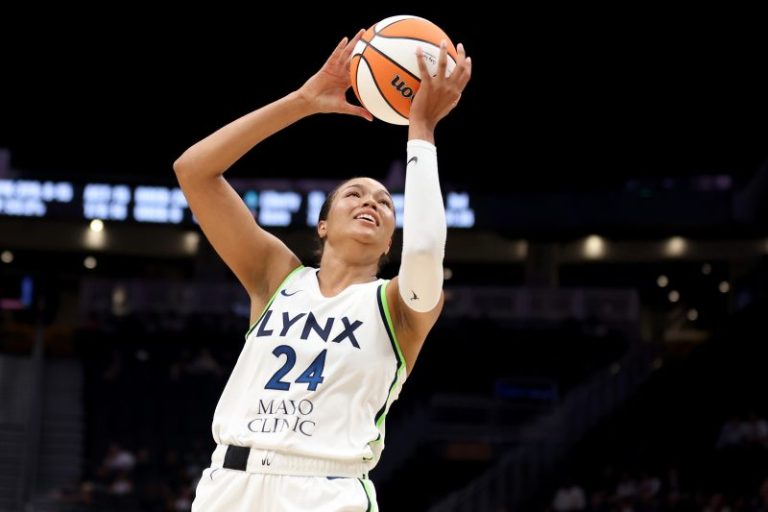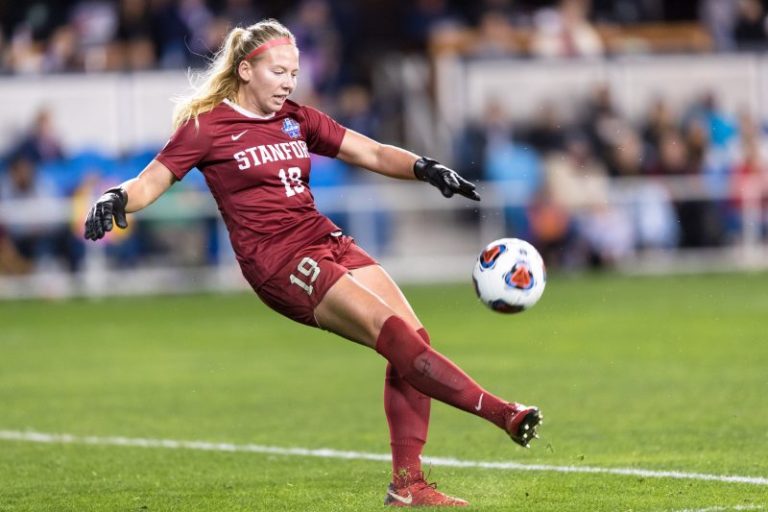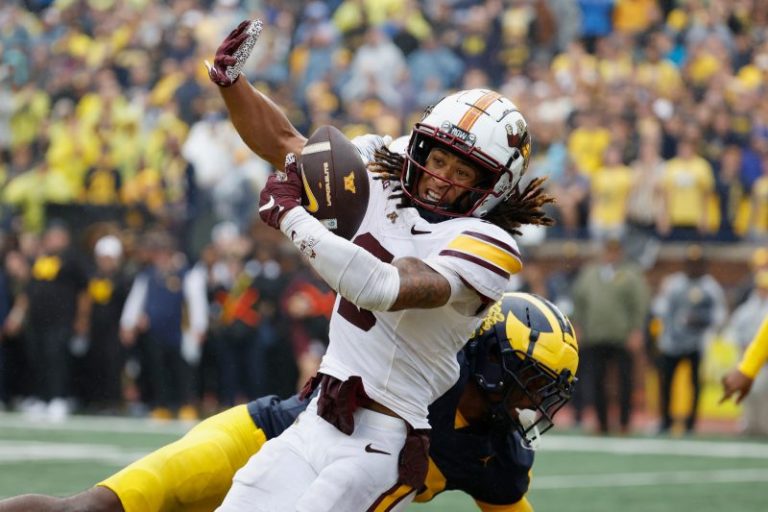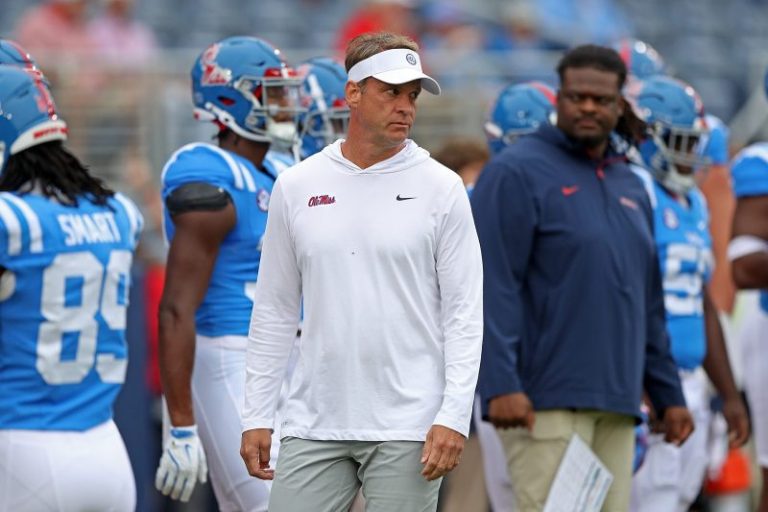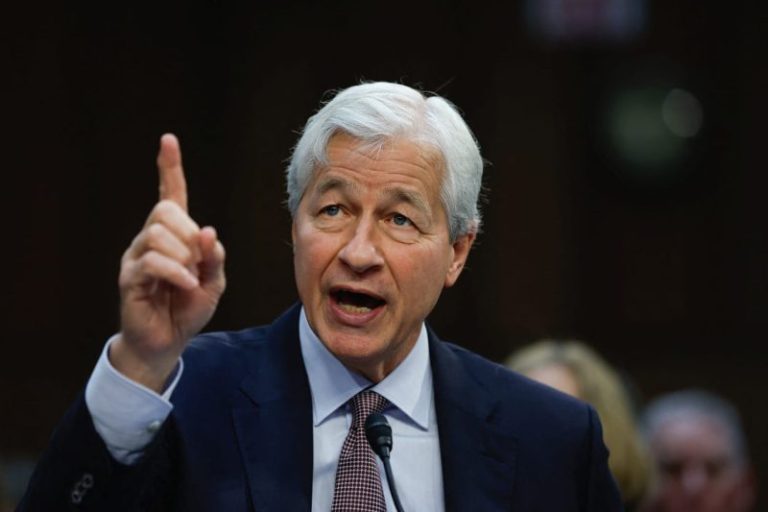Nobody in college football has punched above its weight in the name, image and likeness era more than Ole Miss.
For years and years before it was within the rules to pay players, Ole Miss would catch the suspicious glare of opposing fans and pique the interest of NCAA investigators every time it landed a big-time recruit. That was the way it used to work in college football when you’re not an Alabama, Ohio State or Southern Cal.
But now? NIL has brought it all out into the open, and Ole Miss has truly knocked it out of the park under Lane Kiffin. Though the actual numbers are opaque, The Grove Collective is widely viewed around the industry as one of the best-run and most organized groups in the country, raising a ton of money and helping Kiffin put out competitive offers for top talent.
“I don’t know what they’re spending, but they’re right there with Ohio State and Texas and all those schools,” former Florida and South Carolina coach Steve Spurrier said recently on longtime journalist Pat Dooley’s podcast. Arkansas athletics director Hunter Yurachek lamented during a booster function that Ole Miss has 5,000 people giving to its collective while the Razorbacks have just 1,000.
The point here is that Ole Miss has gone all-in on NIL as its path to the top of the sport because it’s the only way Ole Miss can get to the top of the sport. Last year, it got the Rebels to 11-2 with a Peach Bowl win. This year, after Kiffin added even more talent, they started at No. 6 in the US LBM Coaches Poll. And now, despite the expectation that the Florida job is going to come open after this season, there’s a legitimate debate about whether Kiffin should take the job because of how well things are set up in Oxford.
That’s how much NIL has changed the narrative around the Ole Miss program.
And yet on Saturday, the Rebels lost 20-17 at home to Kentucky of all teams. It’s not a loss that necessarily wrecks their season. They still have opportunities to get back in the College Football Playoff race against Georgia and LSU.
But it is the first really deflating loss Kiffin has suffered in the NIL era against a team that he was supposed to beat, and the psychology of it is going to be fascinating.
Ole Miss has spent the past few years hammering the necessity of fans giving money to its collective in order to compete with the Alabamas and Georgias. And the fan base basically made that happen.
But now before they see the ultimate payoff of a playoff berth, they lose to … Kentucky?
Will that motivate fans to spend more and give Kiffin even more resources to go buy players? Or will the willingness fans have had to reach into their pocketbooks fade if the results make it clear that even trying to buy a championship-level roster isn’t good enough?
That conundrum puts Ole Miss at No. 1 on the Misery Index, a weekly measurement of which fan bases are feeling the most angst.
Four more in misery
Baylor: Being a good guy, a thoughtful guy and even an elite football mind doesn’t get you much benefit of the doubt. Dave Aranda is all of those things. He’s also clearly in trouble after a 34-28 loss to BYU that leaves the Bears at 2-3. A week ago, it was a come-from-ahead collapse against Colorado after giving up a long touchdown on the final play of regulation and then losing in overtime. This time the Bears were down 21-0, got all the way back within six points, then threw an interception with 59 seconds left when they had a clear opportunity to win.
Aranda is now 11-19 since winning the Big 12 title in 2021, and it’s going to be hard for athletics director Mack Rhoades to justify patience if this turns out to be a third straight losing season. Baylor doesn’t need to be a juggernaut every year to satisfy its fan base, but expectations have been raised and the resources are there to be better than this.
Despite Aranda’s credentials as a defensive coordinator and the fact that he’s well-liked and respected by everyone in the game, his low-key philosopher-king style works against him when fans want to see fiery indignation about the current state of affairs.
Virginia Tech: There is no solace in being unlucky. A loss is still a loss – and it feels even worse when you think you won. For a few minutes Friday night, Hokies fans thought quarterback Kyron Drones completed a 30-yard touchdown pass as time expired to beat ACC favorite Miami. They believed it because that was the call on the field amidst a mess of bodies fighting for the ball in the back of the end zone.
But after a controversial replay, officials determined that receiver Da’Quan Felton never had control of the ball before it got jarred loose by a Miami player who was out of bounds, thus making it incomplete. Miami won, 38-34, and some Virginia Tech fans were crying about bias as the Hurricanes are in the playoff chase and the Hokies are not. But if you want to assign blame, more should go to Virginia Tech coach Brent Pry, whose poor timeout management on the final drive left his offense with too little clock. At 2-3, the experience-laden Hokies are one of the nation’s biggest disappointments.
Alabama-Birmingham: After decades of pain and irrelevance, the Blazers suddenly got good by hiring a career-long grinder named Bill Clark, who had spent two decades tearing it up in the Alabama high school ranks and then winning big for one year at Jacksonville State.
But when Clark retired after the 2021 season due to health issues, athletics director Mark Ingram went in the opposite direction after the 2022 season, hiring former NFL quarterback Trent Dilfer, who came with a high profile because of his time on ESPN but a thin coaching résumé (he led a private school in Nashville for four seasons).
It smelled like UAB trying to draft off the excitement and publicity Deion Sanders generated at Colorado, and it was also confusing. UAB, particularly coming off five straight winning seasons under Clark and one under Bryant Vincent, is the kind of job a lot of experienced coaches would want.
But after a 41-18 loss to Navy in front of a smattering of fans, Dilfer is now 5-11 at UAB with two of those wins coming against FCS competition.
Improbably, Dilfer made it worse when he told his kids to come sit with him in the postgame news conference and made an off-hand comment that “it’s not like this is freaking Alabama” in reference to the number of reporters in the room. What Clark built was special because he acted like UAB was special. What Dilfer’s building is crass because he’s acting like UAB is lucky to have him there.
Florida State: This is the last time the Seminoles, the nation’s most disappointing team, will appear in this ranking. From here on out, there is no choice but numbness and acceptance of how badly Florida State and its coaching staff have handled the last nine months from roster-building to expectation-setting to game-day coaching. But even if Florida State fans have known for a few weeks that this season was going nowhere, it’s still a whole different level of disaster to get embarrassed 42-16 by newly-minted ACC rival SMU.
Though quarterback isn’t the only problem at Florida State, it’s the one that needs to be fixed before the other problems are even relevant. DJ Uiagalelei, whose career has taken him from Clemson to Oregon State to the Seminoles, is not working out at all. He went 12-for-30 for 222 yards with three interceptions against SMU, and it wasn’t a surprise because that’s basically how he’s played all season.
Once a five-star recruit that everyone in the country wanted, his lack of mobility and pocket awareness and overall accuracy was apparent before he got to Florida State. The question is why Seminoles coach Mike Norvell ignored all that and bet the entire 2024 season on Uiagalelei fulfilling the potential people once believed he had.
It will go down as a transfer portal/NIL cautionary tale, an example of how quickly a program can go into the tank if it goes for a quick fix at the most important position and makes the wrong choice.
At 1-4, this is as bad as anyone could have possibly imagined things getting for the Seminoles, and it’s so bad that Norvell may need to rethink his entire approach to recruiting and roster-building before he lands on the hot seat.
Miserable but not miserable enough
Auburn: If they weren’t already deep into the well for two fired coaches in the last five years – $21.7 million for Gus Malzahn, $15.3 million for Bryan Harsin – you could see the notoriously twitchy Auburn boosters start to get their buyout muscles working again. Hugh Freeze has not just been a disappointment at 8-10 overall, he’s a disappointment because his quarterback play has been worse than anywhere he’s ever coached. After losing 27-21 to Oklahoma when Payton Thorne threw a pick-six with 4:06 remaining, Auburn fans can abandon hope things will turn around this year.
North Carolina: Though all the attention for North Carolina’s face-plant will go toward head coach Mack Brown, consider the plight of defensive coordinator Geoff Collins. Though his head coaching tenure at Georgia Tech was a total failure, he had been quite successful under Dan Mullen at Mississippi State and under Jim McElwain at Florida. But going back into the coordinator role in Chapel Hill has been ugly. After giving up 70 points last week in a loss to James Madison, the Tar Heels gave up 21 straight points to rival Duke after holding a 20-0 lead. At Georgia Tech, Collins was famous for walking around with a cup from Waffle House. Brown’s tenure might be smothered, covered and peppered at this point.
Washington: Any excitement about joining the Big Ten this year had nothing to do with road trips to Rutgers. And yet, like an annual dentist’s visit, it’s just what you have to do. But not only do Huskies fans have to figure out how they have gone from playing for a national championship nine months ago to losing to Rutgers, 21-18, they have to watch former coach Kalen DeBoer lead Alabama to a win over Georgia in his first big SEC test. It’s hard to pick which one is more painful.
New Mexico State: Though this program will rarely be mentioned nationally in any normal context, the Aggies have really outdone themselves this time. A year ago, they generated headlines when quarterback Diego Pavia (now at Vanderbilt) was caught on video allegedly urinating on rival New Mexico’s practice field. This year, it’s offensive coordinator Tyler Wright getting suspended after the Las Cruces Sun-News, part of the USA TODAY Network, reported that more than 150 social media posts of his dating from his time as a college athlete more than a decade ago contained slurs and derogatory language against various groups. These posts aren’t garden-variety jokes. This is seriously demented, hateful stuff, and it’s yet another embarrassment for a 1-4 team that wasn’t exactly thriving anyway with Wright in charge.
Kent State: Since Sean Lewis left to become the offensive coordinator at Colorado last year (he’s now head coach at San Diego State), the Golden Flashes have won just a single football game – against Central Connecticut last season – in 17 tries. In short, this is the worst program in the FBS, and the indignity continued in a 52-33 loss to Eastern Michigan. Against four FBS opponents this season, Kent State has been out-scored 234-57. There’s a good chance it could go winless in the MAC over two consecutive seasons for the first time in history.
(This story was updated to change a video.)

